Electronic components (pickups)
Normally the electric bass has the following electronic components:
Pickups
Potentiometers and respective knobs
Output jack
Contrarily to acoustic instruments the electric ones have a solid body and hence no resonating chamber. Therefore, the pickups play a fundamental role.
They are made of copper wire wrapping a magnet in a coil. The metal strings vibrate in the magnetic field and produce an electric signal in the coil according to their vibration.
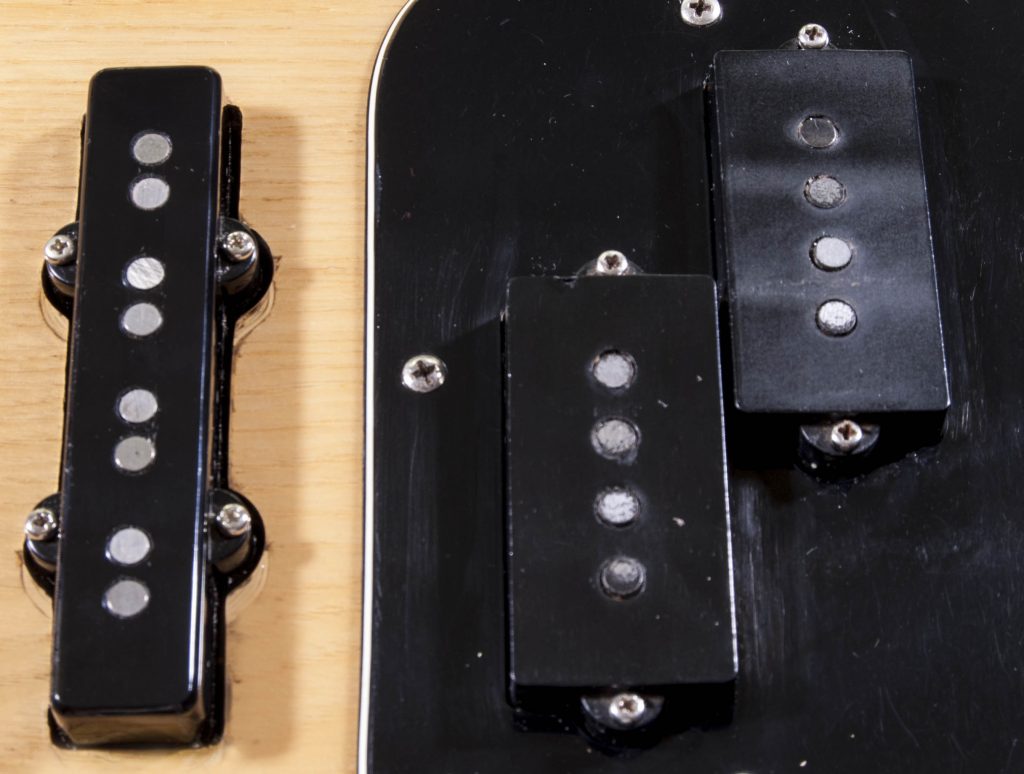
J AND P PICKUPS
In our specific example we have two types of pickups. They are inspired to the ones carried by the most famous of Fender’s basses: Fender Precision (1957 model) (called P-Bass) and Fender Jazz (1960) (called J Bass).
The Precision’s pickup is set close to the neck (neck pickup) and it is a one pickup with two coils (split coil). One coil captures the vibrations of the first and second strings and the other one the vibrations of the third and fourth strings. This is similar to the humbucker pickup, because it produces a neat sound cleared of the electric hums.
The Jazz Bass pickup is set next to the bridge (bridge pickup) and has a single coil.

JAZZ (J) PICKUP
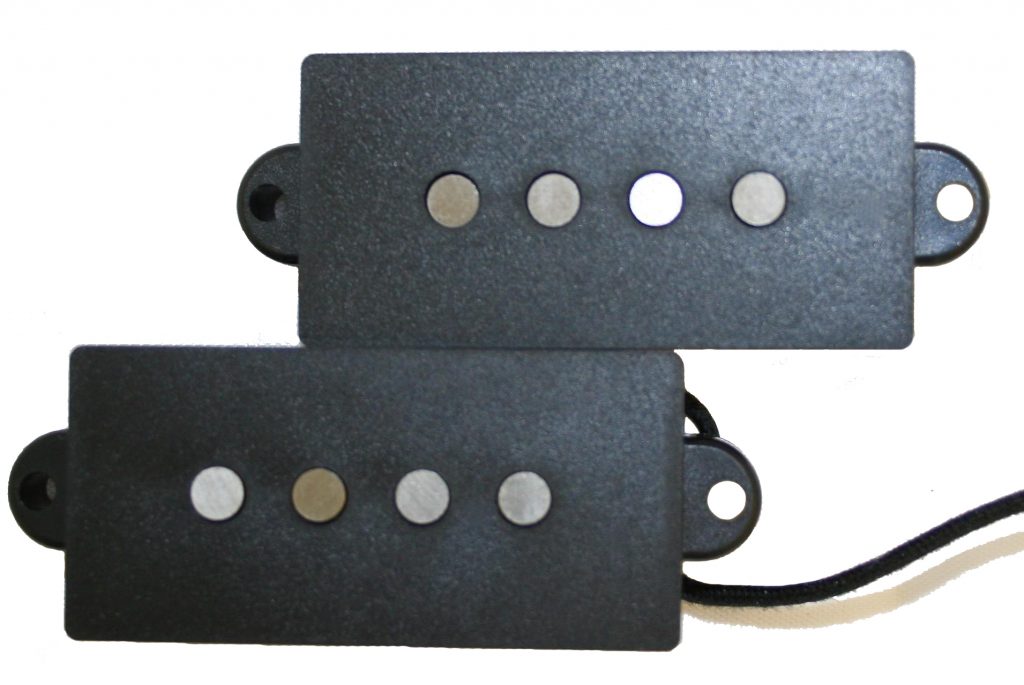
PRECISION (P) PICKUP
The electric signal is transmitted to the potenziometers. They control the output volume and tone.
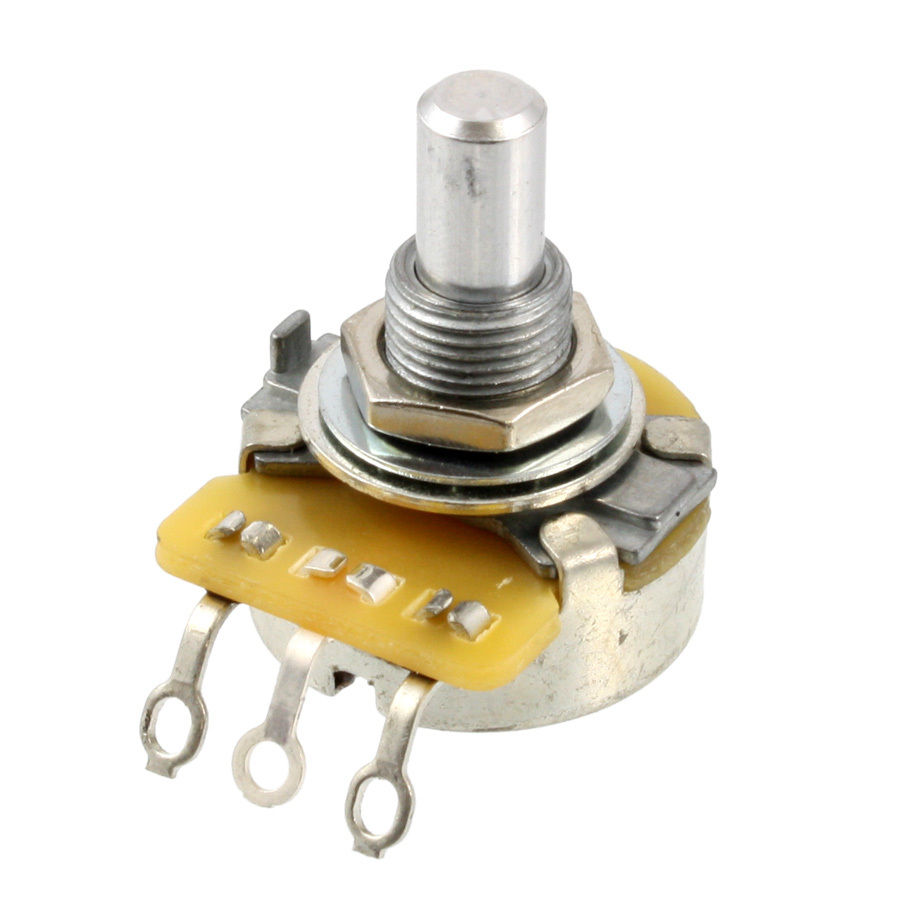
POTENTIOMETER
Potentiometers are controlled with suitable knobs. They are fixed into the pickguard and are placed in a hollow in the body underneath.
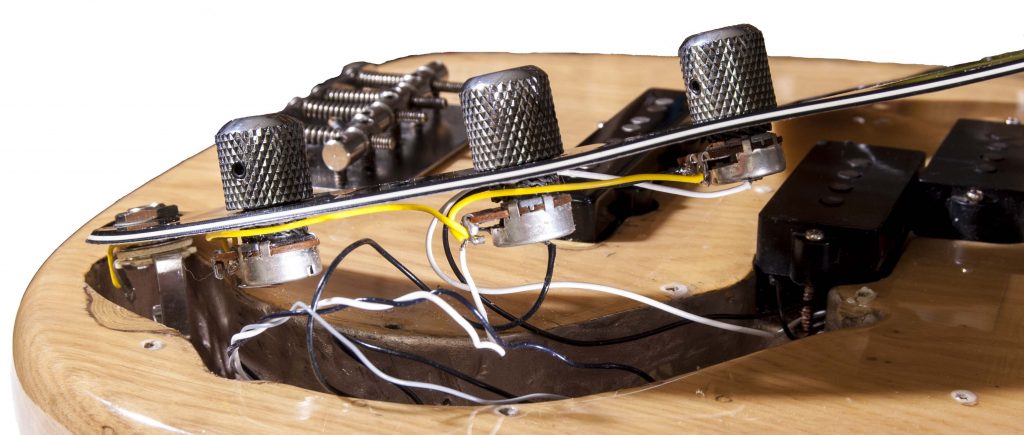
KNOBS AND POTENTIOMETERS FIXED IN THE PICKGUARD
In the case of this specific instrument and many similar models, there are two potentiometers acting on the volumes of the pickups. A third potentiometers cuts high frequencies in order to darken the sound.
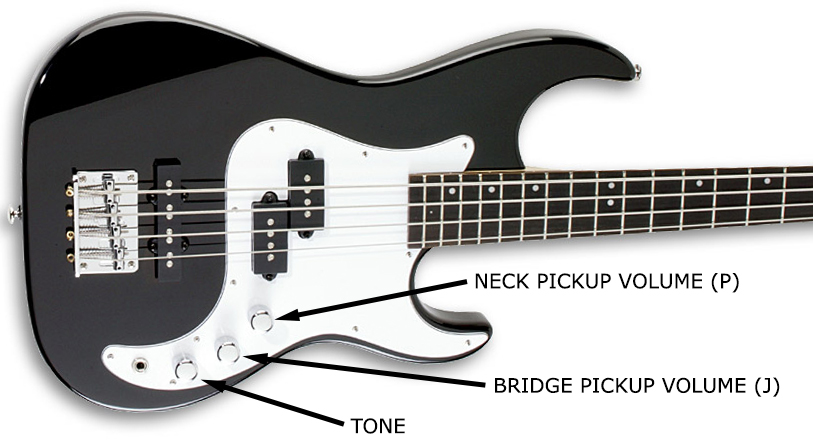
USE OF THE KNOBS
Other settings include a main volume, a balance knob (blender or balance blend pot) which controls the mixing level of the sounds coming from the two pickups and the usual tone knob (low pass filter) that cuts the high frequencies.
The sound transformed in electric signals, shaped by the potentiometers, eventually comes out from the bass through the output jack. This is the connection socket with the male jack (1/4 inch or 6.3 mm TRS plug).
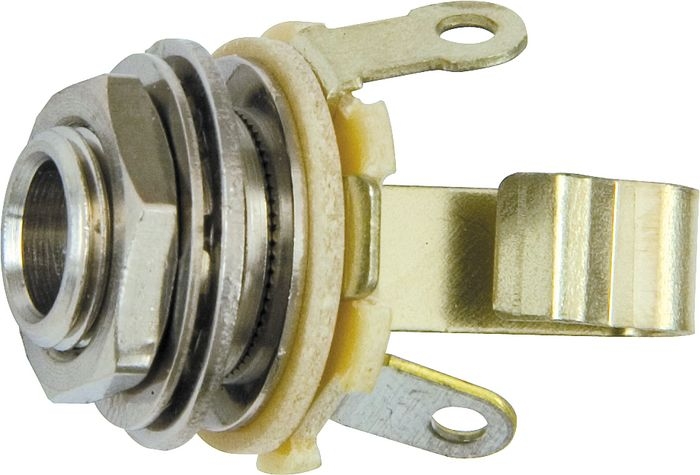
OUTPUT JACK
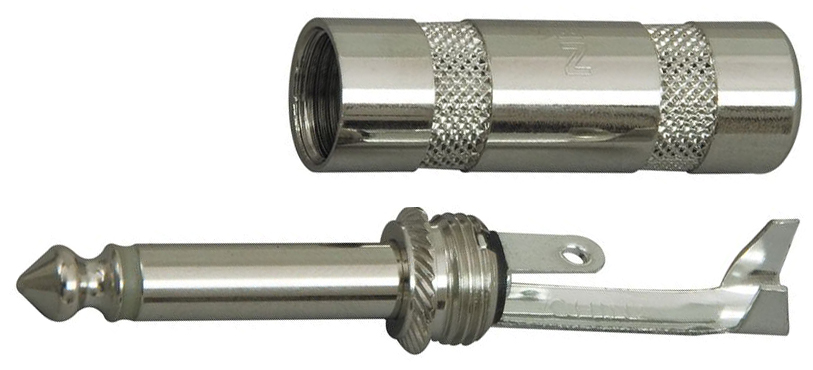
JACK PIN 6.3 mm
The output jack is the device which connects the cable to the bass. The electric signal goes through the cable and gets to the amplifier The amplifier transforms the electric signal back into sound which comes out of the speakers.
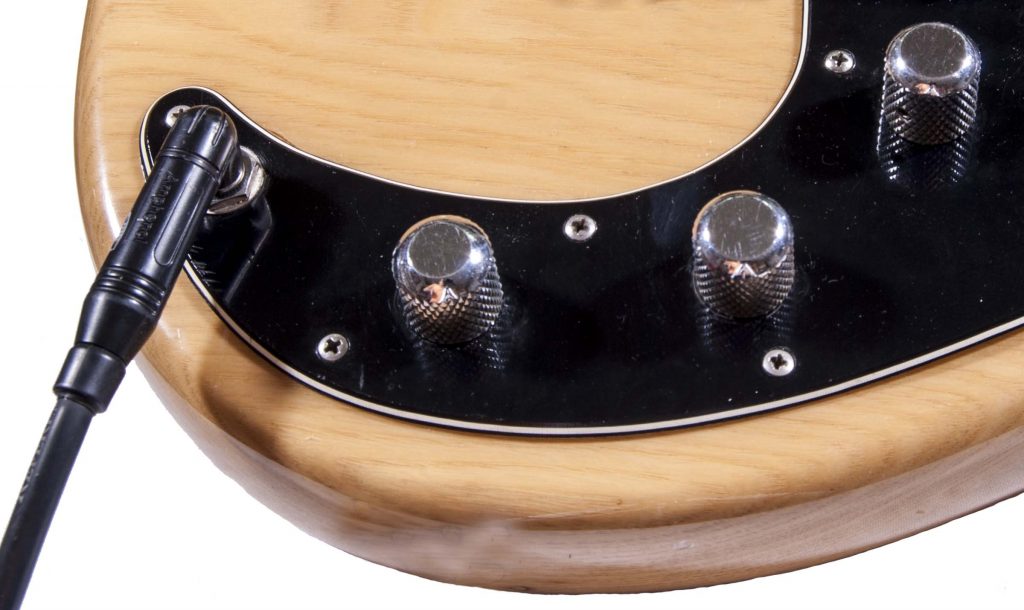
OUTPUT JACK SCREWED INTO THE PICKGUARD AND CONNECTED TO THE CABLE
